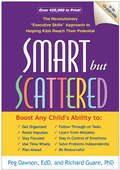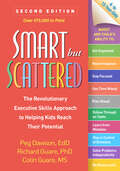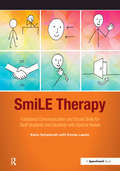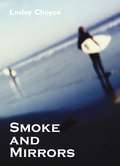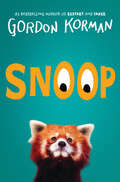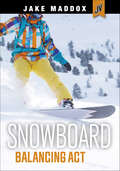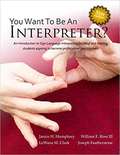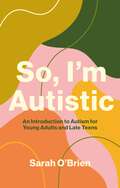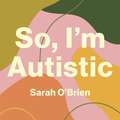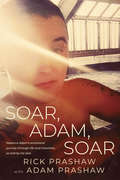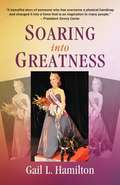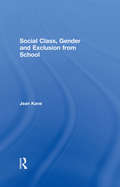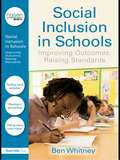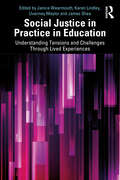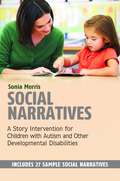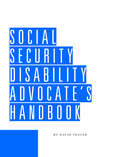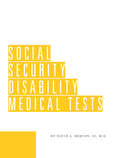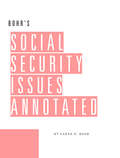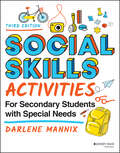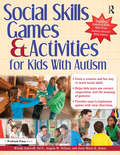- Table View
- List View
Smart but Scattered: The Revolutionary "Executive Skills" Approach to Helping Kids Reach Their Potential
by Peg Dawson Richard GuareThere's nothing more frustrating than watching your bright, talented son or daughter struggle with everyday tasks like finishing homework, putting away toys, or following instructions at school. Your "smart but scattered" child might also have trouble coping with disappointment or managing anger. Drs. Peg Dawson and Richard Guare have great news there's a lot you can do to help. The latest research in child development shows that many kids who have the brain and heart to succeed lack or lag behind in crucial "executive skills"--the fundamental habits of mind required for getting organized, staying focused, and controlling impulses and emotions. Learn easy-to-follow steps to identify your child's strengths and weaknesses, use activities and techniques proven to boost specific skills, and problem-solve daily routines. Small changes can add up to big improvements--this empowering book shows how.
Smart but Scattered: The Revolutionary Executive Skills Approach to Helping Kids Reach Their Potential
by Peg Dawson Richard Guare Colin GuareAll kids occasionally space out, get sidetracked, run out of time, or explode in frustration/m-/but some do it much more often than others. If you have a &“smart but scattered&” child, take heart. This encouraging guide is grounded in research on the crucial brain-based skills that 4- to 13-year-olds need to get organized, stay focused, and control their impulses and emotions. The expert authors guide you to identify your child's executive strengths and weaknesses, boost skills that are lacking, fix everyday routines that don't work, and reduce [ital]everyone's[/ital] stress. Including new research, new and updated vignettes, and "A Good Place to Start" suggestions for each skill, the revised and updated second edition features a new chapter on technology and a greatly expanded school chapter. Helpful practical tools can be downloaded and printed. See also the authors' Smart but Scattered Teens, Smart but Scattered--and Stalled (with a focus on emerging adults), and The Smart but Scattered Guide to Success (with a focus on adults).
SmiLE Therapy: Functional Communication and Social Skills for Deaf Students and Students with Special Needs
by Karin Schamroth Emma LawlorStudents with communication difficulties need skills to communicate functionally in everyday situations, without the usual support and protection from home and school. These skills need to be explicitly taught, to enable them to become confident young adults. Smile Therapy is an innovative therapy designed to equip students with the skills necessary to become responsible individuals who operate at the highest level of independence that their circumstances and condition allow. Teachers and speech and language therapists have always included functional life skills practice in their work with students. Now, for the first time, they can do so using a therapy with a proven method that has demonstrable outcomes. This book is a practical step-by-step resource, designed to guide teachers and SLTs in the delivery of Smile Therapy with students who have communication difficulties due to deafness, specific language impairment, learning difficulties, autism or physical disability. Features: a clear step-by-step approach to preparing, running and evaluating Smile Therapy, with photocopiable resources. clear outcome measures from each module to share with parents, staff, education and health managers.
Smoke and Mirrors
by Lesley ChoyceShort-listed for the 2005 CLA Young Adult Canadian Book Award Sixteen-year-old Simon has always been considered odd. Three years ago, a skateboarding accident caused some minor brain damage and made him a little stranger. His career-driven parents mostly leave him alone, and he spends much of his time living in his imagination. When Andrea, whom no one else can see, appears to Simon in class, he is fascinated by her and strikes up a friendship, even though he knows she may be pure hallucination - he’s had imaginary friends before. Andrea says she is there to "help" him, but before the story ends, Simon discovers that it is he who needs to help Andrea, not the other way around.
Snakewalk
by Charles WheelerA hell-raising fisherman who has "a problem with authority," Patrick Todd is blinded in a boating accident and enrolls in a school for blind adults, or "blinks" as he calls them. An extremely sharp fellow, he readily learns to cane and read braille, refusing to let his loss of sight cramp his style. He leads friends from the school, Cole, Bernie and his girlfriend, Geri, on expeditions to San Francisco's bars, forays that don't always end well, but keep Patrick sane. Like Ken Kesey, Wheeler finds a microcosm of modern society in Patrick's new, limited com munity at "blink school." Unlike Kesey's McMurphy, however, Patrick is not at war with any single individual, but struggles instead, and with considerable success, to keep his place in the "regular," or sighted, world. Raunchy, quick-witted and brave, Patrick Todd is a character to remember.
Snoop
by Gordon KormanFrom Gordon Korman, the bestselling author of Restart, the story of a boy who's stuck at home with two broken legs... and who starts using cameras and a drone to spy on his classmates, neighbors, and a possible criminal who's come to town.If Carter hadn't been checking his phone, he might have seen his brother coming down the ski slopes in his direction. And if Carter had seen his brother in time and avoided the crash, he might not have two broken legs right now.Oops.Now Carter is stuck at home for weeks, with both his legs in casts. Bored, he starts checking out the live feeds from police cams around his town. Before he knows it, he's obsessed -- watching his classmates when they don't know he's looking, and discovering some other VERY STRANGE things going on that no one else is noticing.But what happens when Carter is found out... and the people he's watching know where he lives?
Snowboard Balancing Act (Jake Maddox JV)
by Jake MaddoxFor twelve-year-old Bristol, being on the slopes means ultimate freedom. As an adaptive snowboarder and a junior instructor, the upcoming PowderX Games are a chance to show her parents how serious she is about the sport. But juggling boarding and teaching with homework and vision therapy for her vergence insufficiency is harder than Bristol thought. When her parents announce that she’ll have to drop some of her snowboarding commitments if she doesn’t do well on an important exam, Bristol is determined to prove that she can do it all. On the day of the Games, it takes a reminder from one of her students—and a tough personal choice—to help Bristol figure out the perfect balance both on and off the slopes.
So Far, So Good!: The Saga of a Broken Neck, and the Good Life that Can Follow
by Lee D. GoldsteinThe candid and inspiring memoir of one man&’s rewarding life spent in a chair—a story of family, spinal injury, and choosing happiness. Lee Goldstein was fourteen years old when an innocent day at the beach ended in a life-altering accident. Yet even in the midst of that fateful tragedy, Lee finds reasons to be grateful—after all, he was rescued from drowning by a famous singer and hobnobbed with celebrities in the hospital. Lee would spend the rest of his life as a quadriplegic, but thanks to the support of his loving family and his own unflagging determination, he lives a long and beautiful life. Lee and his wife Marilyn raise five adopted children, including Tim, who faces his own challenges when he is diagnosed with autism. Though he later loses Marilyn, Lee goes on to fall in love with and marry Ellen, who makes his later years close to divine. Lee always focuses on the positive, but he pulls no punches in his frank and honest account of what quadriplegics and their caretakers deal with every day, from the use of wheelchairs, to bathroom needs, to the sometimes life-threatening, embarrassing, or hilarious moments of life.
So You Want to be an Interpreter
by William F. Ross Jan Humphrey LeWana Clark Joseph FeatherstoneSo You Want to be an Interpreter is unlike any other entry-level textbook on the market. This new 5th edition has been revised and updated with the latest research and instructional content by the work of a team of authors who have over 150 years of experience interpreting and teaching. They were joined by invited guest authors and members of a Deaf interpreter focus group who have shared insightful contributions as well as feedback from recognized leaders in the profession, past and present. Together their expertise makes this the cutting-edge textbook for Deaf and hearing students studying to become sign language interpreters. The number one student textbook in Interpreter Training Programs and the premier study material for RID and AVLIC written certification exams.
So, I'm Autistic: An Introduction to Autism for Young Adults and Late Teens
by Sarah O'Brien'There isn't a secret manual outlining exactly how to get through your teens and young adulthood as an autistic individual, but this book provides a script for how to do what adulthood will make you do anyway, in a way that is most accessible for you".You've just received an autism diagnosis, so why do you still feel so lost when it comes to what autism actually means for you?Written by autistic advocate Sarah O'Brien, this book gives a much-needed introduction into what autism is and removes the myths, stereotypes and stigma that surround it. Sarah provides insights into what to do after diagnosis and how to approach and navigate the process of informing those in your life, from your family and friends to your teachers or manager at work. Utilising her own experience of feeling lost after diagnosis and navigating all of the 'firsts' of adolescence and young adulthood Sarah provides an honest and friendly voice to guide you through it all.Intelligent and clearly-written, this is the fact-led and information-rich resource that will answer your questions about autism, introduce you to your new community and set you up to thrive as an autistic adult.
So, I'm Autistic: An Introduction to Autism for Young Adults and Late Teens
by Sarah O'Brien'There isn't a secret manual outlining exactly how to get through your teens and young adulthood as an autistic individual, but this book provides a script for how to do what adulthood will make you do anyway, in a way that is most accessible for you".You've just received an autism diagnosis, so why do you still feel so lost when it comes to what autism actually means for you?Written by autistic advocate Sarah O'Brien, this book gives a much-needed introduction into what autism is and removes the myths, stereotypes and stigma that surround it. Sarah provides insights into what to do after diagnosis and how to approach and navigate the process of informing those in your life, from your family and friends to your teachers or manager at work. Utilising her own experience of feeling lost after diagnosis and navigating all of the 'firsts' of adolescence and young adulthood Sarah provides an honest and friendly voice to guide you through it all.Intelligent and clearly-written, this is the fact-led and information-rich resource that will answer your questions about autism, introduce you to your new community and set you up to thrive as an autistic adult.
Soar, Adam, Soar
by Rick Prashaw“Coming out. Coming in. Coming home.” Adam Prashaw’s life was full of surprises from the moment he was born. Assigned female at birth, and with parents who had been expecting a boy, he spent years living as “Rebecca Danielle Adam Prashaw” before coming to terms with being a transgender man. Adam captured hearts with his humour, compassion, and intensity. After a tragic accident cut his life short, he left a legacy of changed lives and a trove of social media posts documenting his life, relationships, transition, and struggles with epilepsy, all with remarkable transparency and directness. In Soar, Adam, Soar, his father, a former priest, retells Adam’s story alongside his son’s own words. From early childhood, through coming out first as a lesbian and then as a man, and his battles with epilepsy and refusal to give in, it chronicles Adam’s drive to define himself, his joyful spirit, and his love of life, which continues to conquer all.
Soaring Into Greatness: A Blind Woman's Vision To Live Her Dreams And Fly
by Gail Hamilton<P>Born ten weeks premature and requiring oxygen to survive, Gail Hamilton's first six weeks of life began within an incubator. <P>Six months later, doctors discovered that Gail had retrolental fibroplasia (RLF), an eye condition caused by the infusion of 100% pure oxygen. By age eleven, she was completely blind. Soaring into Greatness follows Gail's story as her outer visual world merged with her inner vision, forcing her to listen with her inner voice, to follow her heart and tune into her intuition. <P>Subjected to physical and emotional abuse, ostracized and oftentimes feeling alone, Gail's journey is one of the courage and perseverance it takes to find one's way through the darkness and soar. <P> "I believe my desire to fly must be bigger than my fear of falling. Vision is internal, not external, and is guided by my heart, not my eyes. In order to be free, to fly, I must want my dream, feel my dream, and believe that my dream will come true. Most importantly, I must live my dream. I am the creator of my destiny, the composer of my symphony, and I choose to live a life of greatness. " - Gail Hamilton
Social Class and Educational Inequality: The Impact of Parents and Schools
by Iram Siraj Aziza MayoSocial class is often seen as an intractable barrier to success, yet a number of children from disadvantaged backgrounds still manage to show resilience and succeed against the odds. This book presents the findings from fifty Child and Family Case Studies (CFCS) conducted with 13–16 year olds. The authors look specifically at the roles that people and experiences - at home, in schools and in the wider community - have played in the learning life-courses of these children; how these factors have affected their achievement; and explanations and meanings given by respondents to the unique characteristics, experiences and events in their lives. Featuring the voices of real parents and children, and backed up by a decade of quantitative data, this is a compelling record that will help readers to understand the complex nature of social disadvantage and the interplay between risk and protective factors in homes and schools that can make for a transformational educational experience.
Social Class, Gender and Exclusion from School
by Jean KaneRising exclusion rates indicate the continuing marginalisation of many young people in education in the UK. Working-class boys, children living in poverty, and children with additional/special educational needs are among those experiencing a disproportionate rate of exclusion. This book traces the processes of exclusion and alienation from school and relates this to a changing social and economic context. Jean Kane argues that policy on schooling, including curricular reform, needs to be re-connected to the broad political pursuit of social justice, and presents compelling case studies of excluded pupils, showing the multi-faceted identities of pupils, with a particular focus on masculine and feminine identities. This invaluable contribution to the literature offers an alternative analysis where the social identities of pupils are shown to be tied up with their exclusion from school. Themes investigated include: the meanings of school exclusions social class, gender and schooling social identities of excluded pupils negotiating identities in school: moving towards exclusion exclusions and young people’s lives improving participation in schooling. Providing fascinating reading for teachers, social workers, researchers and policy-makers this book considers how educational disadvantage might be addressed through recognition of the gender and class identities of pupils.
Social Inclusion in Schools: Improving Outcomes, Raising Standards (nasen spotlight)
by Ben WhitneyThis book provides the busy teacher with all the information they need to make social inclusion a reality within schools. By demonstrating how teachers and schools must work together to promote the wider welfare of all children, the book focuses particularly on the welfare of children on the margins of society who need the most protection. It shows how teachers can aim to reduce inequalities and maximise the learning opportunities available for these vulnerable children, whatever their background or social class. The author addresses key issues such as: attendance and achievement exclusion and behaviour safeguarding and child protection children at risk of missing education. By emphasizing the Every Child Matters agenda and the importance of joined-up partnership approaches with other professionals and agencies, this book is essential reading for all practitioners working to support pupils at risk of exclusion.
Social Justice in Practice in Education: Understanding Tensions and Challenges Through Lived Experiences
by Janice Wearmouth James Shea Uvanney Maylor Karen LindleyExploring Social Justice in Practice in Education focuses on the tensions and challenges to issues of fairness and social and cognitive justice in the sphere of education. The terms ‘fairness’ and ‘social and cognitive justice’ are often used to justify particular policies and practices in the sphere of education. In providing a clear definition of what they should mean in practice, this book includes a discussion of, and, in some cases, potential resolutions to, tensions and challenges in relation to notions of fairness, and social and cognitive justice that are implicit within individuals’ lived experiences across all phases of education. Through their personal narratives, the authors illustrate how such tensions and challenges have played out in their own lives. They go on to explore differences in interpretations and consequent challenges in putting concepts of social justice into practice. Chapters consider important implications across different sectors and phases of education, including special educational needs, leadership and higher education. This insightful volume will enable educators, at all levels, to hear from students, family members, significant adults/carers and professionals, their experiences of fairness and social justice in education, and about what could be done in the future to redress injustices. It will appeal to readers at all levels in education including those studying for or teaching Education-related degrees at bachelors’, masters’ and doctoral levels.
Social Narratives: A Story Intervention for Children with Autism and Other Developmental Disabilities
by Sonia MorrisSocial Narratives are a simple, evidence-based intervention to help children with autism spectrum disorders (ASD) and other developmental delays to understand appropriate social behaviours and overcome the anxiety associated with social situations. This practical guide explains how to create and use personalised Social Narratives with children aged 4+. Drawing on the latest autism theory and findings from research, the author provides step-by- step guidelines for writing and using Social Narratives at home or in the classroom. She describes clearly the key components of the approach, including incorporating the interests of the child, using literal and positive language and including visuals and comprehension questions to support learning. 27 sample Social Narratives are also included, to provide inspiration and useful examples of how Social Narratives can be used in practice. Perfect for improving social behaviour in children with ASD, this book will be a valuable resource for teachers, speech and language therapists, occupational therapists and educational psychologists, as well as parents.
Social Security Disability Advocate’s Handbook
by David TraverSocial Security Disability Advocate's Handbook is a sophisticated guide filled with pattern questions and supporting data that will help you (1) knowledgeably and effectively challenge vocational testimony, and (2) use the Process Unification Rulings as powerful weapons for your claimants. David Traver's sophisticated guide also serves as a valuable source for when you need to educate the ALJ about the limits placed by Social Security Rulings. Social Security Disability Advocate's Handbook shows you how to turn the Rulings into powerful weapons for your claimants: * Remind ALJs what the Rulings require with 93 "commands" to agency adjudicators excerpted from the Rulings. * Rebut common but invalid reasons ALJs use to reject claimant's allegations. * Prevent the ALJ from rejecting a medical source statement based on the ALJ's finding that the medical source was not aware of all the medical and other evidence in the file. * And more!
Social Security Disability Law and the American Labor Market
by Jon C. DubinHow social security disability law is out of touch with the contemporary American labor market Passing down nearly a million decisions each year, more judges handle disability cases for the Social Security Administration than federal civil and criminal cases combined. In Social Security Disability Law and the American Labor Market, Jon C. Dubin challenges the contemporary policies for determining disability benefits and work assessment. He posits the fundamental questions: where are the jobs for persons with significant medical and vocational challenges? And how does the administration misfire in its standards and processes for answering that question? Deploying his profound understanding of the Social Security Administration and Disability law and policy, he demystifies the system, showing us its complex inner mechanisms and flaws, its history and evolution, and how changes in the labor market have rendered some agency processes obsolete. Dubin lays out how those who advocate eviscerating program coverage and needed life support benefits in the guise of modernizing these procedures would reduce the capacity for the Social Security Administration to function properly and serve its intended beneficiaries, and argues that the disability system should instead be “mended, not ended.”Dubin argues that while it may seem counterintuitive, the transformation from an industrial economy to a twenty-first-century service economy in the information age, with increased automation, and resulting diminished demand for arduous physical labor, has not meaningfully reduced the relevance of, or need for, the disability benefits programs. Indeed, they have created new and different obstacles to work adjustments based on the need for other skills and capacities in the new economy—especially for the significant portion of persons with cognitive, psychiatric, neuro-psychological, or other mental impairments. Therefore, while the disability program is in dire need of empirically supported updating and measures to remedy identified deficiencies, obsolescence, inconsistencies in application, and racial, economic and other inequities, the program’s framework is sufficiently broad and enduring to remain relevant and faithful to the Act’s congressional beneficent purposes and aspirations.
Social Security Disability Medical Tests
by David Morton IIIEvaluate Social Security Medical Disability Test Results Effective advocacy requires informed and critical evaluation of your clients' medical tests and their results. Were they properly performed? By the right person? Interpreted correctly? What is the chance of a false negative result? Here you will find normal test ranges, predictive values, relevant listings, proper technique, and more for 470 medical tests. You will be able to critically examine the application of test results to disability claims. Here is the authoritative and detailed guidance from a former SSA Chief Medical Consultant who has personally made more than 50,000 disability determinations. Dr. David Morton's Social Security Disability Medical Tests answers the following questions for nearly every test you will encounter: * When is the test warranted? * Can SSA purchase it? Does it commonly do so? * What are the relevant social security medical listings? * What complications can result? * How should the test be performed? * Is the test objective, providing independently verifiable information based upon observation? Or is it subjective, depending upon the information elicited by the testing physician? * What is the probability that the test will not detect the abnormality? * What is the prevalence of the abnormality in the population? * What is the normal range of test results? The book is written in plain English and details more than 500 medical tests frequently encountered in SSA disability determinations. Real-life examples and explanatory drawings accompany many texts. Medical terms are explained as they occur in the text. Over 700 medical abbreviations are defined. Also provided are more than 80 normal laboratory test values and eight different treadmill stress test protocols.
Social Security Disability Practice
by Thomas BushDetailed guidance is important when navigating the hidden rules, obscure interpretations, and frequent delays common to Social Security disability cases. Turn to Tom Bush's Social Security Disability Practice when challenges or questions arise. This 1000-page masterwork covers the waterfront of social security disability practice: Selecting good cases. Sections 160-62 Determining the basis for denial, and common erroneous reasons for denial. Sections 173, 207 Comparison of Social Security disability and SSI. Section 135 Obtaining and dealing with medical and vocational opinion evidence. Section 220 Impairment-specific RFC questionnaires. Section 230 Issues commonly arising in hearings. Section 287 Preparing claimants and witnesses to testify, including questionnaires and letters. Section 290 Specific and detailed hearing questions for claimants, witnesses, and experts. Chapter 3 Proving inability to do unskilled sedentary work, including cross-examination questions. Section 346.6 Using the Medical-Vocational Guidelines as framework for decision-making, with charts, questions for the vocational expert, and court decisions. Section 348 Res judicata and reopening applications. Section 370 Index of key rulings. Appendix 1 Calculating back benefits, with worksheet. Section 430 Payment issues and solutions, with directory of contact information. Section 440 Developing a legal theory for appeal, with checklist and sample briefs. Chapter 5 Attorney fee issues and solutions. Chapter 7 And much, much more. Considered by many to be the most practical work in the field, Social Security Disability Practice is chock-full of practice-proven forms. Developed by author Tom Bush for his own office, these forms will save you hours and improve your advocacy. Just a few of the tips found in the helpful charts, appendices and forms. Minimize the frustrations in dealing with the SSA, the author, a veteran disability representative, clarifies issues such as: developing the theory of the case, establishing and proving pain, dealing with vocational and medical experts and using the fee agreement process. Useful forms, questionnaires, and checklists help you streamline cases. The two volume book now includes access to Jamesforms.com, containing more than 120 forms and the full-text of the book.
Social Security Issues Annotated
by Sarah Bohr Kimberly Cheiken Curtis FisherBohr's Social Security Issues Annotated With Bohr's Social Security Issues Annotated, author Sarah Bohr has assembled the arguments and cases she uses to construct winning briefs for social security disability practitioners around the nation. This valuable drafting tool, which is supported by over 3,600 citations, contains: * A checklist of errors commonly occurring in the sequential evaluation process, assessment of disability, evaluating specific impairments, and administrative review. * A summary of cases decided in the last eight years, organized by circuit. * This section includes a valuable table of cases organized by issue. * An exhaustive outline of the law, organized first by issue and then by circuit, and drafted in argument format. * Detailed dissection of 48 common issues. This section contains summaries of the applicable statutes, regulations, rulings, POMS, cases, and practice pointers. Now you can efficiently produce the same persuasive and well-supported arguments that Ms. Bohr has used to win cases for disability lawyers around the country.
Social Skills Activities for Secondary Students with Special Needs: For Secondary Students With Special Needs
by Darlene MannixA practical and hands-on collection of worksheets to help students learn social skills In the newly revised Third Edition of Social Skills Activities for Secondary Students with Special Needs, veteran educator Darlene Mannix delivers an invaluable and exciting collection of over 150 ready-to-use worksheets designed to help adolescents with special needs build social skills, understand themselves, and interact effectively with others. Organized into three parts, the book covers lessons in self-understanding and personality traits, basic social skills, and social skills application. It also contains: 30% brand-new material and thoroughly updated content that includes new lessons and technology updates Updated topics, including safe social media navigation, leisure situation social skills, and cyberbullying Stand-alone lessons and worksheets that offer excellent foundations for individual teachings Perfect for special educators, general education teachers, and school counselors and psychologists, Social Skills Activities for Secondary Students with Special Needs is also an indispensable resource for the parents of special needs children and teachers in training.
Social Skills Games and Activities for Kids With Autism
by Wendy Ashcroft Angie Delloso Anne QuinnSocial Skills Games and Activities for Kids With Autism provides complete instructions for using fun, engaging games and activities to teach social skills to children with autism spectrum disorders. The games include directions for assessing skills such as asking for toys, getting the attention of others, reading nonverbal gestures, understanding perspectives, and cooperating to solve problems. Using the principles of Applied Behavior Analysis, the book takes teachers through motivating, prompting, shaping, modeling, and reinforcing social skills while playing the games and helping students learn to participate in other activities such as demonstrating the social skill in role plays and the natural environment. Perfect for teachers struggling to help their students with autism learn to interact socially with their peers, these games are sure to become a much-loved part of students' daily routines.
